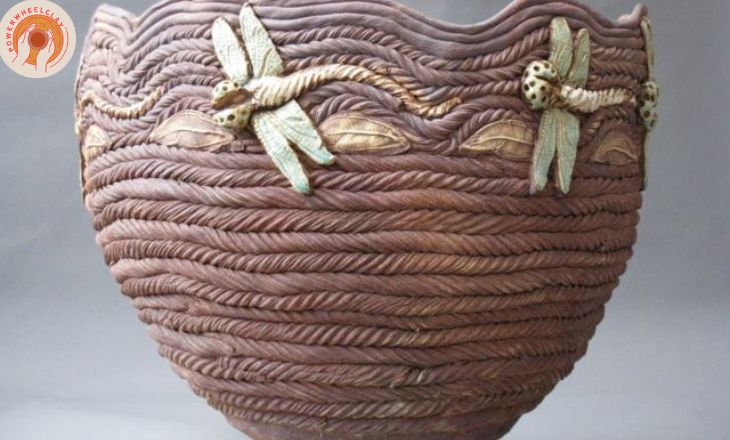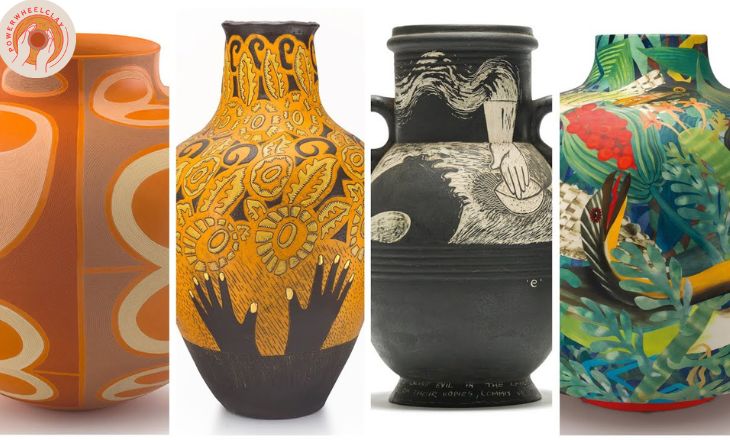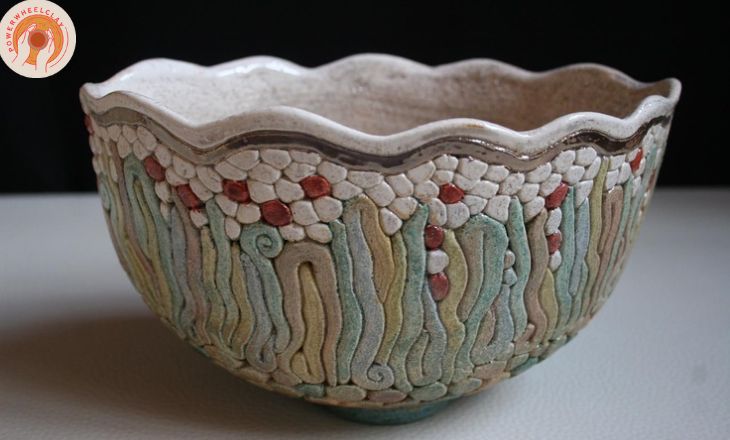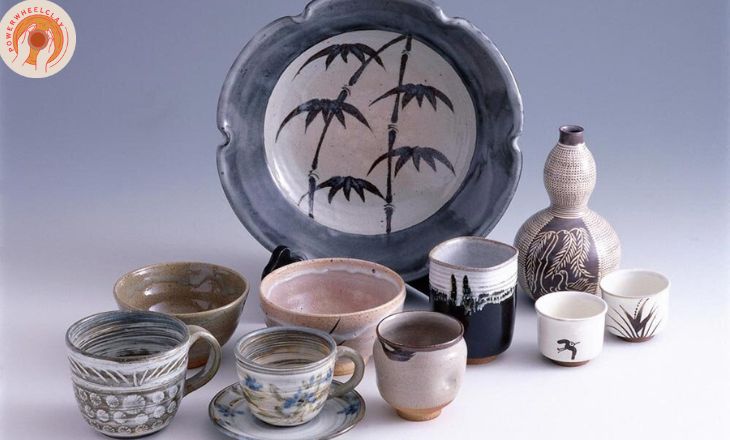Historical Coil pots stand as a testament to the ancient coil pots that transcend time and geography, connecting civilizations through the delicate dance of shaping clay. The coiling technique, dating back thousands of years, has woven its way through the tapestry of history across continents, each region infusing its unique flair into this timeless craft.
From Africa to Asia, Europe to the Americas, the evolution of coil pots paints a vivid picture of human creativity and ingenuity in harnessing the earth’s raw materials to create functional yet exquisite vessels.
Each region’s distinctive traditions and techniques have left indelible marks on these handcrafted treasures.
Historical Coil Pots from Africa
African coil pots were among the first forms of hand-built pottery, dating back to around 7000 or 6000 BC. Texan art historian Diana Lyn Roberts has extensively studied these ancient artifacts, shedding light on their significance and evolution over time.
Despite her contributions, there are still gaps in the literature regarding the traditional ways of creating these coil pots. The techniques used in crafting historical coil pots differ significantly from current ceramic methods, highlighting the rich history and cultural significance of this ancient coil pots.

While modern ceramic practices often involve wheel throwing and mold casting, traditional hand-building remains a cornerstone in maintaining the authenticity and heritage of pottery making.
African Ceramic Techniques
Early African pottery was a significant testament to the intricate craftsmanship of ancient civilizations, fashioned entirely by hand using traditional techniques. The clay, mined and carefully prepared, held the gritty material together as skilled artisans skillfully shaped coils of clay into vessels and ornate objects.
These works of art were then fired in wood kilns, where the low brick walls contained the intense heat needed to transform raw clay into durable pottery. The use of natural materials and handcrafted methods highlighted the resourcefulness and creativity of these early African communities.

Each piece told a unique story, reflecting the cultural traditions and beliefs passed down through generations. The resulting pottery showcased not only functional utility but also served as a visual representation of artistic expression that continues to inspire contemporary artists around the world.
Traditions that Have Survived
The ancient tradition of using a mortar and pestle to grind dried clay into a gritty powder has been practiced for centuries across vast continents. This simple yet powerful tool not only transforms raw materials into usable forms but also carries with it cultural significance and artistic expression.
In many cultures, coiling techniques are employed to shape the clay into intricate designs and structures, showcasing the creativity and skill of the artisans. Through the process of digging up and working with clay, generations have passed down these traditions that have survived the test of time.
The connection between human hands and natural elements like clay speaks to our innate desire to create, innovate, and preserve our heritage.
African Coil Pottery
In Burkina Faso, a country in West Africa renowned for its rich cultural traditions, the art of African coil pottery thrives. Skilled potters adept at their craft create intricate pieces by utilizing the upper lip of clay, expertly scraping and molding it to form distinct shapes.

The rough clay surface undergoes a transformative process as a thick coil of clay is meticulously shaped and smoothed into existence. Among Igbo potters in the region, this method has been passed down through generations, resulting in an evolution of techniques that have withstood the test of time.
These artisans are known for their talent in creating smaller pots with finesse and precision, showcasing the beauty and intricacy that can be achieved through African coil pottery.
Historical Coil Pots from Asia
Asia, a huge and diverse continent, has a rich history of coil pottery that spans centuries. From the intricate designs of ancient Chinese pots to the rustic beauty of Indian earthenware, each piece tells a story of craftsmanship and innovation.
Throughout history, techniques in coil pottery have evolved, reflecting the cultural influences and artistic preferences of different regions. One notable development in the history of coil pottery is the impact of trade routes on ceramic styles.

Advancements in kiln technology allowed for more complex firing processes, resulting in vibrant glazes and sophisticated designs on coil pots.
Coil Pottery in the Middle East
The birthplace of pottery can be traced back to southern Iraq, the ancient cities of Mesopotamia where the coiling technique first originated. This method involves hand-building vessels by layering and joining coils of clay, a tradition passed down through generations.
This technique not only revolutionized pottery-making but also reflected the deep cultural connection between art and daily life in ancient Mesopotamia. In addition to its artistic significance, pottery-making in this region was also intertwined with child-rearing practices. Children would learn the craft from a young age, honing their skills by pressing clay coils to create various forms and shapes under the guidance of experienced artisans.
Coiling and The Pottery Wheel
The development of the pottery wheel was a crucial invention that revolutionized the way ceramics were created. Before its existence, potters had to rely on hand-building techniques like coiling to shape their clay vessels.
With the invention of the pottery wheel, artisans were able to produce more consistent and symmetrical pieces in a fraction of the time. One interesting aspect of the pottery wheel is its ability to move heavy items with ease.
By utilizing a simple turntable mechanism, potters could effortlessly rotate their workpieces for even shaping and carving. The fusion of traditional coiling techniques with modern innovations like flywheel principles has continued to inspire creativity and creativity in modern ceramic design.
Coil Pottery in Japan
The Jomon Period in Japan, which coincided with the Neolithic Period, is known for its distinctive corded pottery. These intricately crafted vessels featured intricate rope patterns that are still admired for their artistry today.
This period in Japanese history is characterized by its unique ceramic traditions, with six distinct phases identified based on the evolving styles and techniques of pottery production.
The coiled construction method allowed artisans to craft pots of various shapes and sizes.
The evolution of corded ware ceramics not only showcases the technical skills of ancient Japanese potters but also provides a window into their cultural sophistication and aesthetic sensibilities.
Examples of Jomon Pottery
During the period of 4,000 to 3,000 BC, an intricate design style emerged in pottery known as flame-like design. This unique aesthetic was prominently featured on fire-flame pots, which were vessels created using the coiling technique by ancient cultures.
These pots often contained grog-like substances mixed with clay to enhance their durability and heat resistance. The flame-like designs not only served a decorative purpose but also symbolized cultural beliefs and practices of the time.
Through careful examination of these artifacts, we can glimpse into the daily lives and artistic expressions of ancient civilizations that thrived during this fascinating period in human history.
Coil Pottery in China
The Neolithic era in ancient China witnessed the flourishing of hundreds of settlements along the fertile banks of the Yellow River and Wei River, particularly in regions like Gansu province.
These settlements were marked by their intricate coil pottery.
A technique where clay is rolled into long snake-like coils and stacked upon each other to create vessels. One striking feature of these coil pots’ history is the meticulously painted decorations that adorned them, often showcasing elaborate patterns in vibrant red and black tones.
The artistry displayed in these pottery pieces not only showcases the advanced skills of Neolithic artisans but also provides a glimpse into the cultural and aesthetic sensibilities of ancient Chinese civilizations.
The use of red and black hues in the painted designs hints at a sophisticated understanding of color symbolism and artistic expression among these early societies. Each vessel tells a story, offering a unique window into the daily lives, beliefs, and traditions of those who crafted and used them thousands of years ago.
Coil Pottery in India
In the realm of coil pottery in India, artisans have been mastering various techniques to shape clay into intricate forms for thousands of years. One of the traditional methods involves beating the clay into shape using a large wooden wheel, a process that requires precision and skill to maintain consistency in thickness and shape.
Another ancient technique involves spinning by using a stick, where skilled potters use centrifugal force to create symmetrical vessels with smooth surfaces.
Traditional firing techniques utilizing a fired bat or stone disc have been crucial in creating durable and long-lasting pottery pieces that celebrate both functionality and aesthetic beauty.
The adaptation of these time-honored methods showcases the rich cultural heritage embedded within every coil pottery creation in India, preserving traditions while embracing innovation for contemporary audiences.
Charai Taba Pottery
The town of Andro in Manipur is steeped in tradition, especially when it comes to the Sanamahi culture and its ancient pottery techniques. One such practice is the Charai Taba pottery, which involves using a coiling technique to create beautifully crafted pots and containers.
This method has been passed down through generations, with each piece showcasing intricate patterns and designs unique to the region. One interesting aspect of Charai Taba pottery is how it reflects the social dynamics within the community.
Mothers-in-law would pass on their knowledge of pottery-making to younger women as a way to strengthen familial bonds and instill cultural values. The process of fermenting an alcoholic rice brew known as yu is often carried out alongside pottery making, creating a harmonious blend of tradition and practicality in everyday life.
The fusion of traditional practices like pottery making with rituals like fermenting rice brews exemplifies the deep-rooted connection between art, culture, and everyday life in this vibrant community.
Historical Coil Pots from Europe
During the transition from the Neolithic era to the Bronze Age, pottery evolved significantly in Europe. The earliest pottery from this period often displayed an undecorated burnished surface, shaped by beating clay into form before firing.
As time progressed, innovations emerged such as the introduction of middle-part decoration on pottery vessels, marking a shift toward more intricate designs and patterns. Two notable styles of pottery during this period were Corded Ware and Grooved Ware, each showcasing unique characteristics that distinguish them.
Corded Ware pottery was named for its distinctive cord-like impressions on the surface, likely created using ropes or cords before firing. On the other hand, Grooved Ware featured decorative grooves that added texture and visual interest to the vessels.
These different styles not only reflect the technological advancements of their time but also offer insights into cultural preferences and artistic expressions during this period of prehistoric Europe.
Beaker Ware
The Bronze Age in Iberia saw the emergence of a distinctive pottery style known as Beaker Ware, characterized by its S-shaped profile and grog tempering. This unique pottery was prevalent across Europe during this period.
The firing process for Beaker Ware was also notable, often taking place in either a bonfire setting or a pit fire, contributing to the durability and strength of these vessels. The use of grog tempering in Beaker Ware production not only improved the thermal shock resistance of the pottery but also allowed for more intricate designs and decorations to be added.
The firing techniques employed for these vessels were crucial in creating objects that served both practical and symbolic functions within ancient societies.
As we uncover more about the technologies and artistic expressions of Bronze Age Iberia, we gain a deeper understanding of the complex social dynamics and cultural interactions that shaped this period in history.
Iron Age Pottery
Point coiling was the predominant way of constructing pottery during the Iron Age, and it involved using small coils of clay to gradually build up a vessel. This technique allowed for greater control over the shape and thickness of the vessel walls, resulting in sturdy and functional containers that were vital for daily use.
As pottery-making techniques evolved, other methods such as coiling or slab construction became popular for creating larger and more complex vessels. One innovative tool that revolutionized pottery-making is the Tourette, a rotating device used to create symmetrical shapes with ease.
By harnessing the flywheel principle, potters could achieve a consistent rotation speed which facilitated smoother shaping and detailing. The introduction of courgettes allowed for more intricate designs to be produced, showcasing both artistic expression and technical proficiency in pottery craftsmanship.
Wheel throwing also emerged as a key technique in pottery production, offering potters a dynamic method to create uniform vessels quickly. This process involved placing a lump of clay on a spinning wheel head and shaping it by hand into various forms such as bowls, vases, or plates.
Historical Coil Pots from North America
The Anasazi, a pre-Colombian Indian culture flourishing in the Southwestern United States, are renowned for their hand-crafted pottery using the coil method. These historical coil pots were meticulously constructed by layering long coils of clay one on top of another to form vessels that served utilitarian purposes in their society.
The intricate process of assembling these vessels reflected the resourcefulness and craftsmanship of the Anasazi people, despite them appearing asymmetrical and lacking in conventional artistry.
Another significant pre-Colombian Indian culture that embraced hand-built pottery was established in Central Mexico around 2,000 BC. Contrary to popular belief, these Central Mexican potters focused more on functionality rather than aesthetic appeal when creating their vessels.
The emphasis on practicality can be seen through their preference for minimal decoration and their innovative techniques for ensuring the durability and usability of each piece. Despite being undecorated and asymmetrical, these vessels from Central Mexico hold great value as they represent a unique blend of utility and simplicity in ancient ceramic artistry.
The utilization of the hand-built method among various pre-Colombian Indian cultures reveals not only shared resourcefulness but also distinctive cultural expressions through vessel-making techniques.
While some societies may prioritize intricate decorations or symmetrical shapes in pottery production, others like the Anasazi and Central Mexican potters valued functionality above all else.
How Native American Coiled Pottery Was Made
Hohokam pottery stands out in Native American history for its intricate geometric designs created using a black-on-white color scheme. Skilled artisans refined their techniques over generations, demonstrating a deep understanding of form and function.
The paint used on these pots was made from crushed rock, showcasing the ingenuity and resourcefulness of the Hohokam people. These pots were not just utilitarian objects but pieces of art that held cultural significance.
The use of geometric patterns in the designs speaks to the larger symbolism and spiritual beliefs of the Hohokam society. By delving into the process behind how these pots were made, we can appreciate the craftsmanship and artistic vision that went into each piece.
Contemporary Indian Tribes
Amongst the vast array of contemporary Indian tribes, the Navajo and Pueblo tribes stand out for their rich artistic traditions. One renowned figure in this realm is Navajo potter Louise Goodman, whose exquisite pottery has garnered international recognition.
Her innovative techniques and dedication to preserving traditional Navajo pottery styles have made her pieces highly collectible worldwide. Another influential figure in the world of Native American art is Maria Martinez, a celebrated Pueblo artist known for her exceptional pottery work.
Drawing inspiration from her Tewa heritage, Martinez revolutionized the art of black-on-black ceramic pottery, earning widespread acclaim for her distinctive style.
Conclusion
Historical coil pots provide a fascinating glimpse into the ancient art and technology of pottery making. These vessels, constructed using a simple but effective technique, showcase the creativity and skill of past civilizations.
By studying these artifacts, we can better understand the cultural practices and artistic traditions of different societies throughout history.
As we continue to appreciate and learn from historical coil pots, it is important to preserve these treasures for future generations to study and admire. Let us continue to explore and honor the rich heritage and craftsmanship embodied in these remarkable pieces of pottery.
FAQS
What Cultures Made Coil Pots?
Coil pots are a traditional pottery form used worldwide for daily and ceremonial use. Different cultures display diverse styles and techniques, preserving their cultural heritage.
What is the History of Pots?
Pots have ancient origins since 18,000 BC in China, evolving in styles and designs globally.
